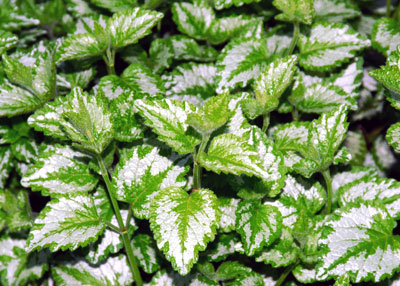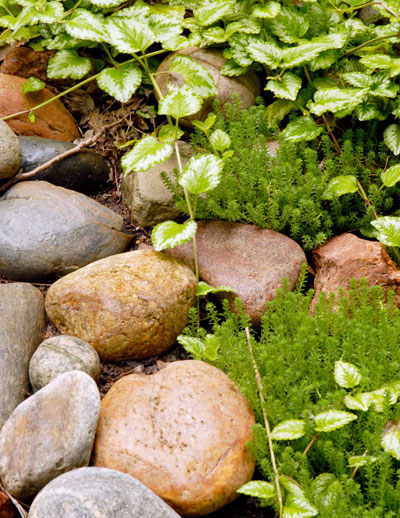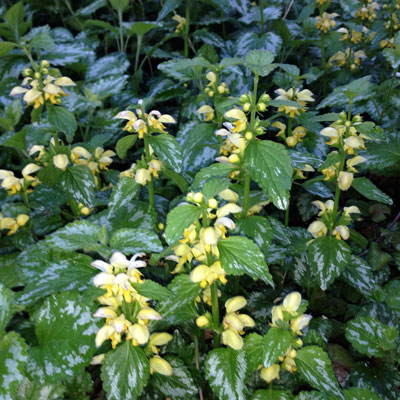From the Sperry Gardens: May 26, 2016

The silvery-green leaves of lamium bring a soothing coolness to the summertime landscape.

Lamium sends out new shoots each spring. Tidy Sedum sexangulaire grows alongside it.
I bought a single 1-gallon pot of this groundcover 30 years ago in Fort Worth. To say that it has prospered would be like saying Elvis and the Beatles made music. I’ve been growing it in our landscape for all of that time, and I’ve come to know its up-sides and downsides. Rather than writing a long narrative, I’m just going to list them.
Assets:
Colorful
Grows well in shade
Grows assertively
Easily propagated from offsets
Reliably winter-hardy for most of Texas
Drought-tolerant, at least in our landscape
Liabilities:
Not good in full sun
Difficult to find in reference books or online*
Difficult to find in nurseries
Grows assertively, but not difficult to trim away from other plants nearby
Worst common name in horticulture (dead nettle)
Hardest to pronounce species name in botany (Lamium galeobdolon)
Dies to ground in winter, so not as showy for three or four months
* When I bought my plant it was simply labeled as “dead nettle.” I was told by the nurseryman that it was some kind of lamium, but I spent a lot of time trying to identify its species. Earlier this week I finally found it. (I believe.) Thank you, Internet. I did a search for “photos Lamium dead nettle,” and I scanned through the dozens of photos that matched that search. Finally, there in the Missouri Botanical Gardens, I found it. You can even hear how their guy pronounces it.
How does this groundcover compare to my other shade-tolerant choices like mondograss, liriope, purple wintercreeper and, in well-draining soils, English ivy? Maybe not quite as high, but considering all the fun assets, I’ll always have a bed or two of it. Any plant as pretty as this that’s had to live with the name “dead nettle” deserves a little special attention.

Lamiums bloom early each spring. But its flowers aren’t the plant’s big selling point. Foliage steals the show. (Forgive the slightly out-of-focus photo. It’s the only one I had.)
